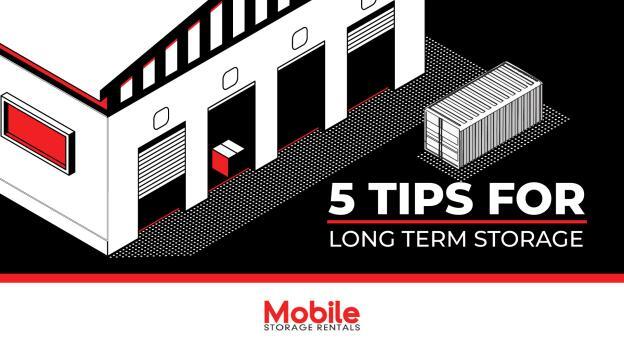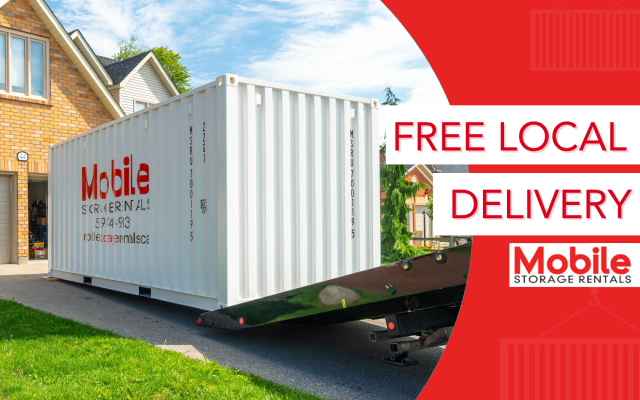Whether you’re downsizing, travelling, moving, or decluttering your home, you’ll need long-term storage to keep your items safe and out of the way until they’re needed again.
If you’re not ready to let go of current but potentially valuable or cherished possessions; Storage Containers are an affordable and convenient option – no matter if it’s six months, after a couple of years, or when your children grow up and have homes of their own.
So, let’s take a look at the process for long-term storage to ensure those cherished items stay safe and in excellent condition while stored.
Decide What Items to Put in Storage
You have to start somewhere, and the best way to get organized is to take inventory and decide precisely what items you want to put into storage.
This process can be a fun trip down memory lane, but try to stay on task!
When going through your belongings, deciding what items to choose, ask yourself these questions:
- Do you (or a family member/ friend) need it?
- Is it functional?
- Is it in good condition?
- Is it high quality and durable?
- Is it expensive?
- Is it difficult to find or replace (antiques, works of art, collector’s items, etc.)?
- Does it have any sentimental value (a family heirloom, a keepsake, a personal favourite, etc.)?
These questions will help you assess the worth and usefulness of your items, which will help when you’re deciding what to keep and what to throw away or donate.
Ultimately, if you answer yes to more than 2 of these questions, you probably want to keep the item and have it safely stored.
Prepare Your Items for Long-Term Storage
Once you’ve chosen what item you want to put into storage, the next step is making sure they are ready to be put away.
You want to ensure that you organize the items you plan to put into storage systematically that makes sense to you and allows for easy retrieval if and when needed.
You don’t want to forget what you have in storage, so create a detailed inventory list of the items and note the value and condition of each item. Keep an electronic copy of the inventory list online for quick reference, but make sure you have paper copies, too.
Now, to prepare the items to go into storage, you’ll want to:
- Thoroughly clean each item to prevent stains from settling in permanently – wash fabric materials, wipe wood surfaces, disinfect appliances, vacuum upholstered furniture, etc.
- Ensure the items are dry before packing them – any remaining moisture can lead to mold growth and/or other kinds of moisture damage.
- Disassemble more oversized furniture to reduce the risk of damage to your bulkier pieces and save space in the storage unit.
- Ensure all water is completely drained from the attached hoses and/or internal mechanisms of kitchen appliances.
- Tie-down and secure cables, hoses, and electrical cords.
- Treat leather items with a leather conditioner.
- Wrap fragile items, sensitive electronics, pieces of art, and any other delicate or valuable items individually in soft packing paper.
Pack Your Items for Long-Term Storage
First things first: use appropriate long-term storage boxes.
To keep your items protected for the storage period, you need to use the right type of packing containers – strong boxes in top condition that are dry and clean.
Do not use old boxes from a grocery store or anything along those lines. They will not likely be completely clean, and they may not be able to withstand stacking and fall apart after a couple of months.
It’s recommended that you buy new boxes that are sturdy and will potentially last for years. Plastic containers are also a viable option – they stack nicely, are resilient, and waterproof.
Don’t use plastic bags. They can trap moisture and cause mold, and can easily rip. Also, trying to stack plastic bags would be a nightmare and an accident waiting to happen. Just avoid them entirely.
Pack Your Items with Extra Care
The difference between preservation and deterioration of your stored items often comes down to proper packing.
This is perhaps one of the most important parts of the process, so take your time and make sure it’s done right.
Here are a few pro tips to get you started:
- Pack similar items (books, toys, kitchen items, etc.) together.
- Line the bottoms of the boxes with crumpled paper for cushioning and insulation.
- Place heavier items on the bottom of a box and lighter ones on top.
- Fill boxes to their capacity – otherwise, they may cave in when stacked and cause damage to the items inside.
- Be careful not to overload the packing containers or make them too heavy.
- Provide plenty of cushioning inside the boxes – crumpled paper, bubble wrap, towels, old clothes, etc.
- Make sure any padding materials you use are completely dry and clean.
- Seal the boxes well to prevent dust and moisture from getting inside.
It’s also a good idea to label all the boxes and containers with any relevant information needed, such as FRAGILE, THIS SIDE UP, etc. You want to ensure your most delicate items are handled correctly and with great care.
For anything that can’t be packed into boxes, such as furniture and appliances, you can use old sheets, plastic covers, or blankets to keep them from being damaged.
Do not store hazardous items (flammable, corrosive, or explosive materials), perishable items (food, medicines, etc.), or items that produce odours.
Furniture:
Clean the furniture, dismantle larger pieces, rub down metal parts with oil, apply furniture polish on wooden surfaces, and treat upholstery with fabric/leather protector.
Appliances:
Defrost refrigerators and freezers, drain the water from washing machines, dishwashers, and driers, clean the appliances (add baking soda to the cleaning solution for proper disinfection), and secure hoses and cables.
Electronics:
Ensure electronic devices are dust-free. Wrap them in soft packing paper and place them in their original boxes or ones of similar size and quality if you don’t have the originals. Fill any empty spaces in the storage containers with packing paper or anti-static packing peanuts and seal the boxes tightly so no dust or moisture can come in contact with your stored electronics.
Clothes:
Wash your clothes, make sure they are completely dry, hang them on a clothes bar, and store them in wardrobe boxes.
Leaving them folded up in a box will cause stress tears in the clothing material and won’t allow air to circulate the clothing items.
If you can’t hang your clothes, use vacuum-sealed bags to store them (the same applies to bedding and curtains as well).
Books:
To make sure your books are dry, leave them in a room that gets plenty of sunlight for several days before packing them up. If needed, use a dehumidifier in the room to ensure the books are 100% dry.
Wrap valuable books or books with leather covers with packing paper, arrange the books flat in small boxes and make sure they are sealed.
Dishes:
Wrap each dish individually and pack them in well-padded boxes. Put plates, saucers, and bowls on their sides and cups and glasses with their rims down.
You can put smaller dishes in larger ones, but make sure they’re well wrapped. Add extra padding in the boxes, seal them tightly, and store delicate and expensive dishes in a specialized dish pack.
Artwork:
Paintings, mirrors, and framed pictures should be stored in specialized picture boxes.
Wrap every piece individually in packing paper, then bubble wrap, and place the bundles in the boxes.
Use masking tape to make a large “X” on glass surfaces (this adds strength and prevents shattering).
Tools:
Clean the tools and wrap bubble wrap around sharp edges—Pack small hand tools into a toolbox or a strong small or medium-sized packing box.
Bundle long-handled tools and wrap them in protective blankets.
Pack electric power tools in their original boxes or use ones of similar size (remove any detachable parts and take out the batteries first).
Drain the fuel from gas-powered tools before packing them for storage.
Pack Your Storage Unit Safely and Efficiently
Now for the final stage: packing the storage container!
First, you want to make a plan. Decide what goes in first, then line the floor with a plastic sheet or tarp. Another good idea is to keep your items off the floor, so wood pallets or cinder blocks could be used to build a protective base.
Some things you want to keep in mind:
- Distribute the weight evenly.
- Pack your container tightly.
- Keep stability in mind.
- Be mindful of access.
We recommend checking out our 10 Helpful Tips For Packing A Storage Container for a more in-depth look at these points and more tips on how to pack a storage container.
That’s a Wrap
It takes a bit more than just piling a bunch of stuff into a container and calling it a day, but with a bit of planning, you can ensure your cherished possessions will stay safe.
If you follow these handy tips, your properly stored items will remain in top condition and will be ready to use when you need them again.
If you have more questions about long-term storage, don’t hesitate to contact us any time!


